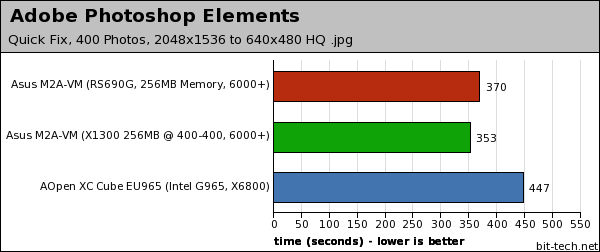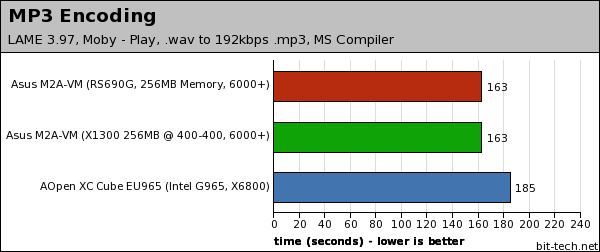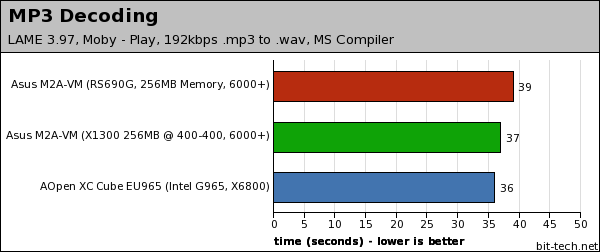Test Setup
While we will review the kit in full when we receive retail board samples, we compared the on-board video to a Radeon X1300 card with DDR2. The RS690 memory allocation was set to 256MB -- the same as the Radeon X1300. Key differences between the Radeon X1300 and the on-board graphics chip are the 128-bit memory bus versus the RS690's 128-bit dual DDR2 link through the CPU's memory controller. We also underclocked the Radeon X1300 to 400MHz core and 400MHz memory to match the RS690's clocks.We're still waiting on some samples of Nvidia's nForce430 / GeForce 6150 boards to test and compare to the RS690, but we did manage to test it against the more popular Intel integrated solution and flagship product, the G965.
At this time we tested the fastest AMD Athlon AM2 CPU, the 6000+ against the fastest dual core Intel Core 2 Extreme X6800 CPU. While we realise these chipsets are likely to be paired with much slower CPUs, we wanted to try to eliminate the CPU bottleneck as much as possible. These results are with reference boards, and when retail ones arrive we will aim to test with CPUs that we feel fit the board's price bracket more appropriately.
The testing methods are exactly the same as in our motherboard reviews. If you want a more detailed explanation of our real world application benchmarks, please refer to one of our motherboard reviews.




On average, the 690G seems to suffer slightly despite having 2GB of memory to address. Having some of the memory bandwidth used up by video addressing means that there is less for the OS and applications.

MSI MPG Velox 100R Chassis Review
October 14 2021 | 15:04









Want to comment? Please log in.